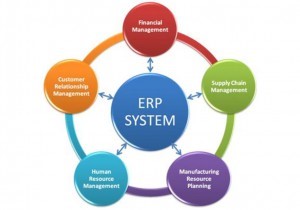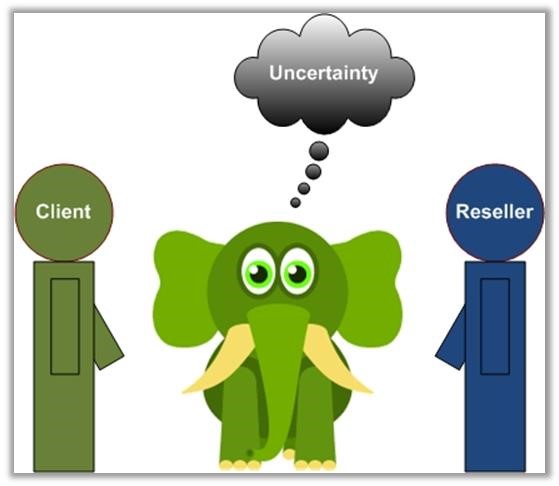1 min read
ERP Software: Inventory Control with RF Scanner Barcode Scanning Guns
ERP Software Consultants Reviews: RF Scanning Guns for Accurate Inventory If you carry inventory in your warehouse operation business, you will...
3 min read
Liz Gonzalez Mon, Feb 16, 2015


As ERP software consultants working with distribution companies over the past 30 years, we’ve helped hundreds of customers manage their inventory more efficiently by implementing ERP software technology and adopting best practices for their operations. In this article, we will review best practices for inventory management and provide you with a worksheet to help you evaluate how to improve your warehouse operations. We have developed these best practices for inventory management to support our customers, and we hope they will help you get started with the process.
If these are questions that you are asking yourself with any frequency, smoothing out your inventory process is something you could benefit from. With sophisticated reporting tools and strong resources, you can:
Click below to download our Best Practices in Inventory Control Worksheet.
Over the years, industries have developed best practices such as analyzing A, B, and C stock, with A being your very important or good items, B being your important or medium items, and C being your “marginal" items. These are tracked in terms of quantity of sales, unit movement, and profitability. Because you might have some items that are highly profitable but don’t move quickly off the shelves, you may want to categorize each item on two (or more) factors.
From there, you can start using best practice algorithms to determine the best way to stock your warehouse. In addition to the A, B, and C stock method, you may also want to consider it from a customer segmentation standpoint, as it's all about how your inventory actually moves. Some items might sell better to large retailers, some items might sell better on the West Coast, etc. Analyzing by customer demographic or location is especially useful in a multi-warehouse situation.
The key is using historical data to smooth out your future flow. One way to do so is to remove the “peaks” and the “valleys” in your processes. If you had an uncharacteristic spike or drop in sales that isn’t indicative of what your sales process normally looks like, removing those will make your historical trends more accurate; you can then use that history to forecast the future – what will your next season/month/quarter look like? Keep in mind, however, that sales trend forecasts are like weather forecasts: impossible to get 100% correct.
Once you have this forecast (and potential safety stock to consider potential peaks), you need to ensure that you consider your bill of materials to determine what you actually need, even if you’re not a manufacturer. If you are, for instance, a distributor that re-packages items or needs things that you don’t manufacture, you still need to make sure that you have all of those raw materials in the right place at the right time.
The most effective way to accomplish this is with an enterprise resource planning (ERP) system. The trouble is that, because ERP systems have historically been so expensive, many businesses are trying to manage all these tasks manually. This typically involves using Excel, which requires a significant amount of manual input. Some businesses don’t know how to extract historical data from their system, and other companies are having to perform multiple export, reformat, and reimport routines because, for example, their system lumps the information together by month, and they need to plan by week.
The problem is primarily one of the time and effort required to extract this information into a usable format. To use an analogy, using Excel for a job this big is like trying to cut down a tree with a Swiss Army Knife instead of the axe that you actually need.
The end goal is to understand how to segment your customer base, analyze which items are more profitable versus less profitable, maximize your inventory costs, and avoid filling your warehouse with items that are unlikely to sell or are not profitable.
Historically, ERP systems and access to the information to accomplish these goals were out of reach. But the right system is now within the budget of most small and mid-sized distributors and manufacturers. If you're considering ways to improve your profitability, reduce your team’s workload, and enhance your customer service, please send us a message.
If you have questions about how to improve your inventory management, Southeast Computer Solutions will help you evaluate your options. CONTACT US by phone at 305-556-4697.
Since 1985, Southeast Computer Solutions has been a top Sage Authorized Business Partner helping small to medium-sized businesses get the right software to run their operations. With over 600 Sage software installations and implementations across the United States and in Latin America, Southeast Computer Solutions is the largest Sage business partner in South Florida. We pride ourselves on technical expertise, real-world business experience and spirit of true partnership with our clients. Headquartered in Miami, Florida, Southeast Computer Solutions serves the small to medium-sized businesses in a wide range of industries from West Palm Beach, Pompano Beach, Coral Springs, Sunrise, Fort Lauderdale, Hollywood, Pembroke Pines, Hialeah, Miami, Doral, Coral Gables and other locations. We also serve the international community including Mexico, Caribbean Islands, Central America and South America.
Another version of this blog was posted on Southeast Computer Solutions’ Blog: Inventory Practices, Best to Follow
Photo courtesy of Stuart Miles on www.freedigitalphotos.net

1 min read
ERP Software Consultants Reviews: RF Scanning Guns for Accurate Inventory If you carry inventory in your warehouse operation business, you will...

1 min read
Why Upgrade to an ERP Software System? Imagine you have a string that connects each employee and that string follows them all day long – you’d...

Top 10 ERP Software Questions to Ask when Interviewing Vendors and VARs Assuming you are involved in a for-profit enterprise, it doesn't really...